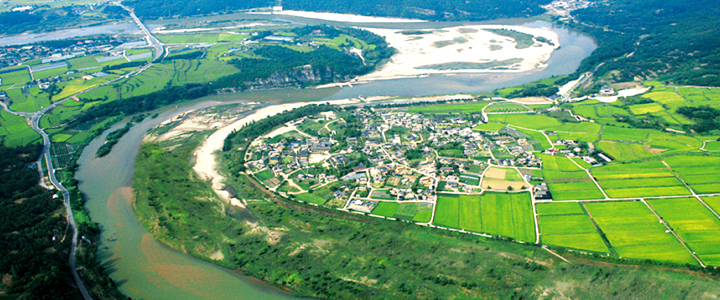
Hahoe is the village where the members of Ryu family which originated from Hahoe Village have lived together for 600 years. It is a representative village for one family where tile-roofed houses and thatched roofed ones have been quite well conserved for a long time.
The village is especially well known as the birth place of Ryu Unryong and Ryu Seongryong. They were brothers: the one was a great Confucian scholar of the Joseon Dynasty: the other was Prime Minister during the period of the Japanese Invasion(from1592 to 1598) called Imjinwaeran.
The reason for the village name Hahoe(Ha means a river and Hoe means turning around) was that the Nakdong River flows around the village in an S shape. Hahoe Village looks like two connected spirals called Taeguek, a lotus flower floating on the water, and a boat gliding on the river. This configuration topologically makes the village a very good residence, so it has been known as a good place to live in since the time of the Joseon Dynasty. Mountain Hwa which originates from the Taebaek Mountains and is 271 meters high is located in the eastern part of the village.
Low hills of the mountain are stretched to the western part of the village. The location on which a great zelkova tree 600 years old stands is the highest in the village. The tree is called Samsindang in which a goddess called Samsin resides. The houses are faced to the river with the great tree at the center, so they are located facing various direction. Considering that many other houses in Korean are faced to the south or the south-east, the configuration of the houses in Hahoe Village is greatly contrasted. It is another characteristic thatched thatched roofed houses are placed in a circula form around tile-roofed houses.
Hahoe Village has conserved Hahoe Byeolsingut Mask Dance Play performed by the public in general, and Seonyujulbul Nori-a boat ride and fire paly enjoyed by the nobility called Yangban. The village conserves many cultural heritages which show Korean traditional living cultures and ancient architectual styles.